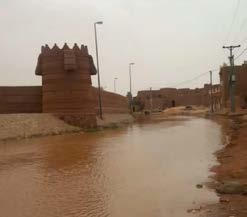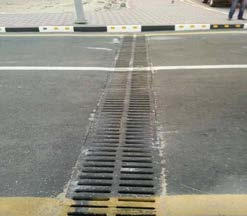Rain Water Drainage
Rain water drainage networks are one of the most important infrastructure services that make the disposal of rain water easy and does not impede the movement of traffic in the streets , and not to affect buildings, corridors and sidewalks . So , we must take into account the inclinations that facilitate the movement of rainwater drainage to drains or be used for other purposes, as rainwater is the main source that many countries depend on for drinking and irrigation.
The main objectives of rainwater drainage
-Establishing and improving rainwater and torrential drainage networks in all cities of the Kingdom by implementing strategic and hydrological studies, establishing torrent drainage channels and rainwater drainage networks, implementing ferries, environmental rehabilitation of valleys, and lowering the surface water level.
-Esnad Company for Contracting contributes to achieving the goal of improving the quality of services provided in cities by improving the coverage and quality of rainwater drainage networks and ward off the dangers of torrential rains.
-The final outputs of the initiative are constructed and improved networks to drain rainwater and ward off the dangers of torrential rains, ferries built on valleys, and bridges to drain torrents in all regions of the Kingdom.


Methods of rainwater drainage networks
The first method – the combined sewage system, in which the drainage is carried out on the sewage network in case of little rain and is disposed of through purification plants.
The second method – the separate sewage system, in which a separate sewage network is designed and implemented , consisting of pipelines and manholes
Steps to implement a rainwater drainage network
After preparing and raising the retina of the site, calculating all road levels and calculating the necessary road inclinations , the network levels are set.
After determining the places of burial and the places of cut (CUT / FILL) for roads, it is not allowed to dig in areas where the distance between the outer surface of the pipe from the top and the current ground level is less than 120 centimeters (Earth cover should be 1.2 meter or more).
Then the surveyor sets the points for determining the drilling path of the network, while also specifying the necessary depth for drilling (or the level of the bottom of the pipe belly, and when drilling, the thickness of the pipe body with the sandy pillow layer at the bottom of the pipe or slabs is taken into account according to the specifications of the project and the type of soil)

